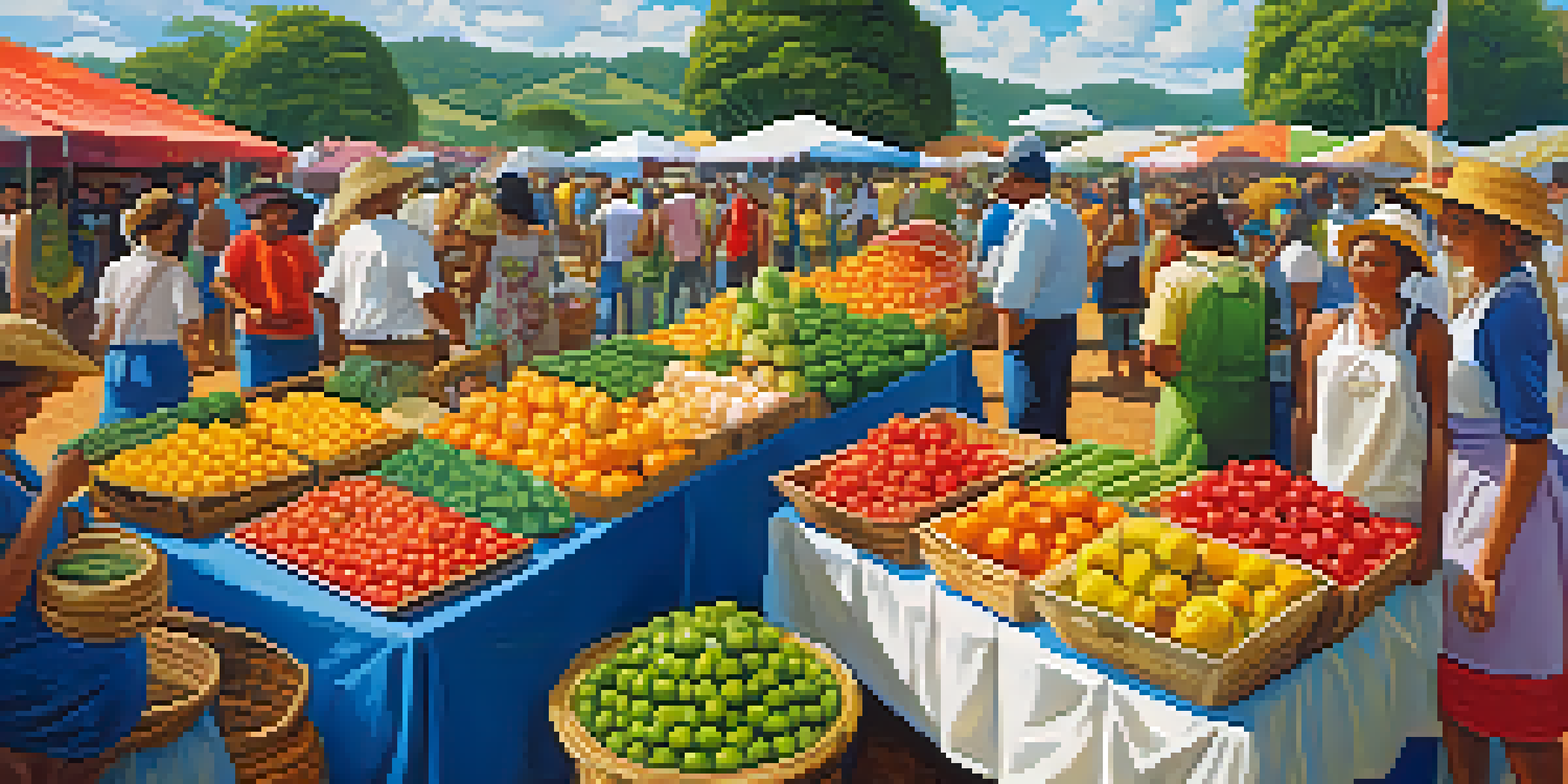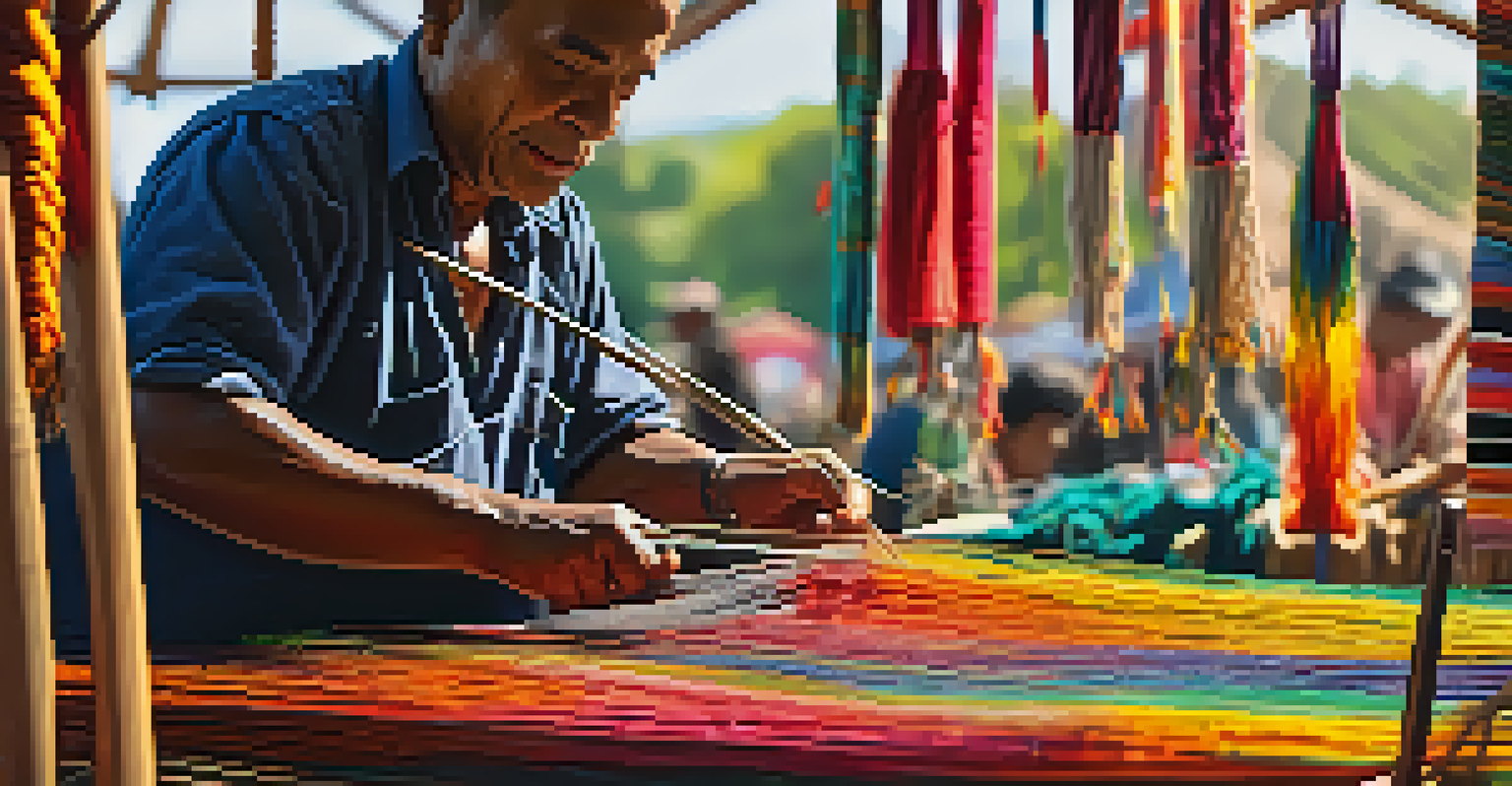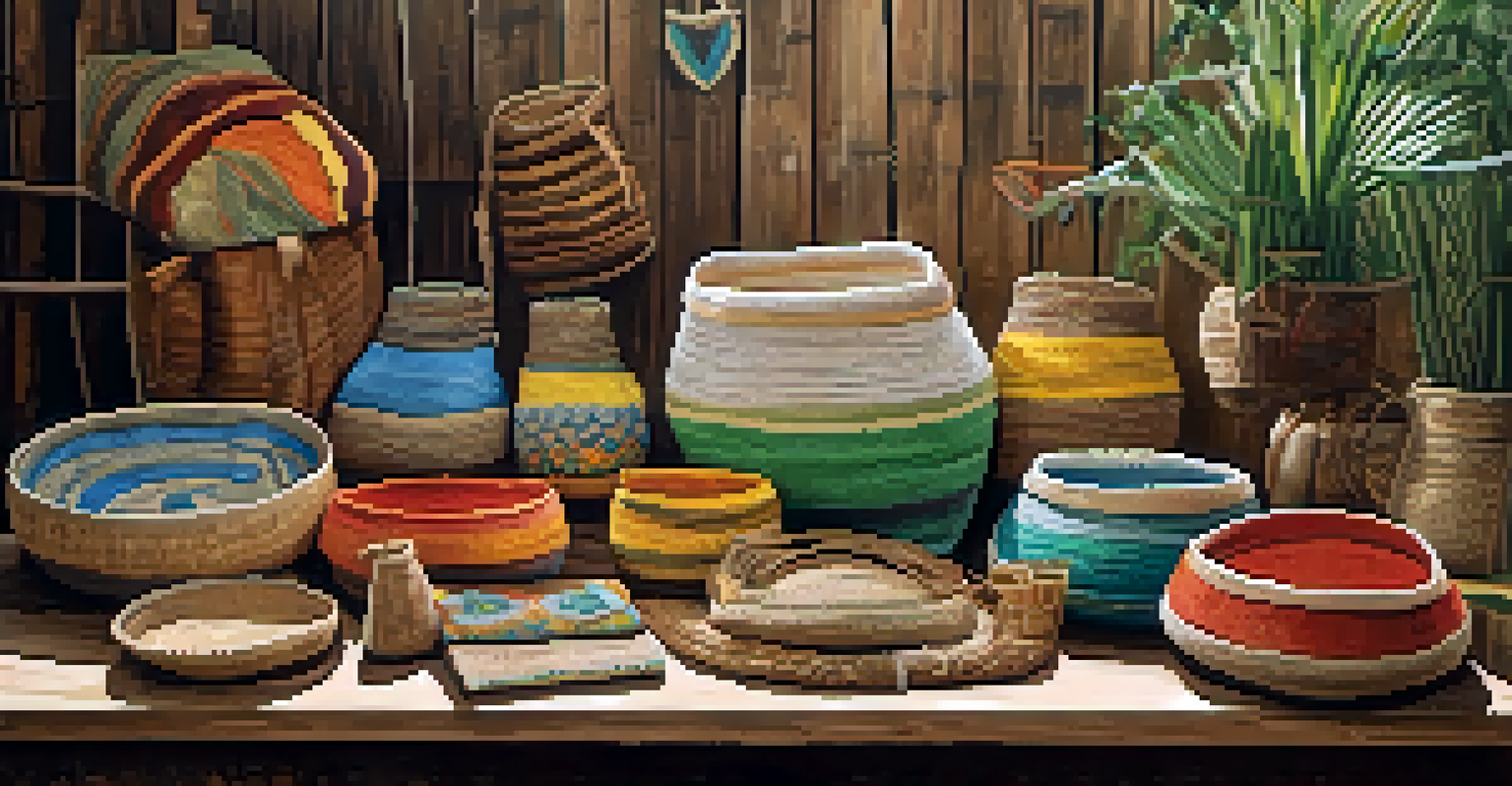The Role of Crafts in Brazil's Agricultural Fairs

Introduction to Brazil's Agricultural Fairs and Crafts
Brazil's agricultural fairs, known as 'feiras', are vibrant celebrations that blend farming, culture, and community. These events showcase not only agricultural products but also the rich tapestry of crafts that reflect local traditions. Crafts play a vital role in these fairs, serving as a bridge between the agricultural and cultural aspects of Brazilian life.
Crafting is not just a job, it's a way to connect with our heritage and share our stories.
From handcrafted pottery to intricate textiles, the crafts displayed at these fairs highlight the diverse skills and creativity of local artisans. This not only attracts visitors but also supports the economy by providing a platform for artisans to sell their work. Attending a fair becomes an immersive experience where agriculture meets artistry.
In this article, we will explore the various ways crafts contribute to the atmosphere, economy, and cultural identity at Brazil's agricultural fairs. By understanding this interplay, we can appreciate why these events are so much more than just a marketplace.
The Historical Context of Crafts in Brazilian Agriculture
Crafts have deep roots in Brazilian history, often intertwined with agricultural practices. Historically, many rural communities relied on handmade goods for both everyday use and trade, making crafts an integral part of their livelihoods. This connection between farming and crafting has evolved but remains significant in today's fairs.

As agricultural techniques improved, artisans began to refine their crafts, often incorporating local materials and traditions. For instance, the use of natural dyes derived from local plants has led to vibrant textiles that tell stories of the land. This rich heritage is proudly showcased at agricultural fairs, attracting both locals and tourists.
Crafts Boost Economic Empowerment
At agricultural fairs, crafts provide vital income for artisans while fostering community collaboration and preserving traditional skills.
Understanding this historical context allows us to appreciate the crafts not just as products, but as narratives of the communities that create them. Each piece carries a story, linking the artisan to the land and its agricultural bounty.
Crafts as a Means of Economic Empowerment
At Brazil's agricultural fairs, crafts serve as a crucial source of income for many artisans. By providing a platform to showcase their creations, these fairs help local craftsmen and women connect with buyers who appreciate their work. This economic empowerment is vital in rural areas where job opportunities may be limited.
Sustainability is about more than just the environment; it's about preserving our cultures and communities.
Additionally, selling crafts at these fairs fosters a sense of community and collaboration among local artisans. They often share techniques, resources, and advice, creating a supportive network that strengthens their craft. This camaraderie not only elevates their work but also enhances the overall experience of the fair.
The economic impact extends beyond the artisans themselves; it helps to preserve traditional crafts that might otherwise be lost. By purchasing handmade goods, fairgoers contribute to the sustainability of these cultural practices, ensuring that they continue for future generations.
Enhancing Cultural Identity Through Crafts
Crafts are a powerful expression of cultural identity in Brazil, representing the diverse heritage of its people. Each region boasts unique styles and techniques shaped by local customs, history, and resources. At agricultural fairs, these crafts become a visual celebration of Brazil's rich cultural mosaic.
Visitors often find themselves drawn to specific crafts that resonate with their own experiences or curiosity about Brazilian culture. Whether it's the delicate lace of the Northeast or the vibrant pottery of the South, each item tells a story that connects people to the land and its traditions. This cultural exchange enriches the fair experience for everyone involved.
Cultural Identity Through Crafting
Crafts at Brazilian agricultural fairs celebrate the country's diverse heritage, connecting visitors with local traditions and stories.
By showcasing these crafts, agricultural fairs not only promote local traditions but also encourage appreciation and respect for Brazil's cultural diversity. In this way, crafts become a medium for storytelling, uniting people through shared experiences and histories.
Crafts as a Catalyst for Sustainable Practices
Sustainability is a growing concern in today's world, and many artisans are adopting eco-friendly practices in their craft. At agricultural fairs, there is a notable emphasis on using sustainable materials and methods. This commitment helps to raise awareness about environmental issues while promoting responsible consumption.
For instance, some artisans create products from recycled or organic materials, demonstrating how crafts can align with sustainable agriculture. By showcasing these practices, fairs educate visitors on the importance of sustainability in both farming and crafting. This synergy fosters a deeper appreciation for the environment and its resources.
Moreover, when consumers choose to support sustainable crafts, they contribute to a circular economy that benefits both the community and the planet. This not only supports local economies but also encourages a mindset shift towards more responsible consumption habits.
The Role of Technology in Modern Crafts
While traditional crafting techniques remain vital, technology is also making its mark on crafts displayed at agricultural fairs. Many artisans are now embracing digital tools to enhance their creativity and reach wider audiences. This blending of tradition and technology offers exciting possibilities for the future of crafts.
Social media platforms, for instance, allow artisans to showcase their work beyond the fairgrounds, attracting buyers from around the world. Additionally, online workshops and tutorials enable artisans to learn new skills and techniques, further enriching their craft. This integration of technology not only modernizes crafts but also helps preserve traditional methods.
Sustainability in Craft Practices
Many artisans are adopting eco-friendly methods, promoting sustainable practices that benefit both the environment and local economies.
By leveraging technology, artisans can maintain their cultural roots while adapting to contemporary markets. This balance ensures that crafts continue to evolve, remaining relevant and appealing to both local and global audiences.
Conclusion: The Lasting Impact of Crafts at Agricultural Fairs
In summary, crafts play a multifaceted role in Brazil's agricultural fairs, contributing significantly to the economy, culture, and sustainability. They provide artisans with a platform to showcase their skills while fostering a sense of community and cultural identity. This dynamic interplay enriches the fair experience for everyone involved.
As we reflect on the importance of crafts, it becomes clear that they are not just decorative items but vital expressions of heritage and creativity. Supporting these artisans and their work is essential for preserving Brazil's rich cultural landscape and promoting sustainable practices.

Ultimately, the presence of crafts at agricultural fairs highlights the beauty of Brazilian culture, inviting visitors to engage with its stories and traditions. By celebrating these crafts, we honor the artisans who dedicate their lives to their craft, ensuring their legacies endure for generations to come.